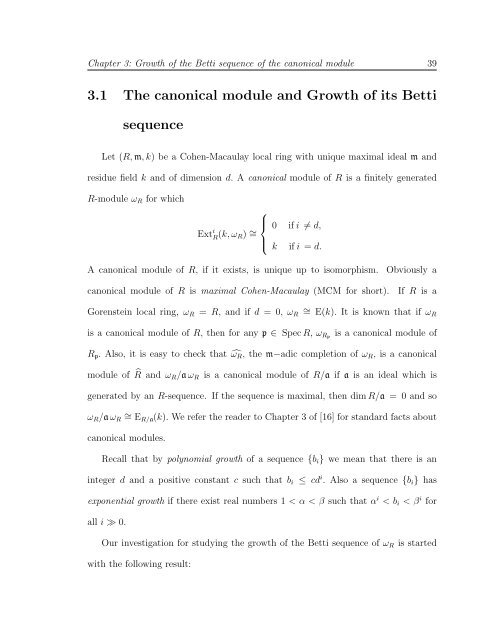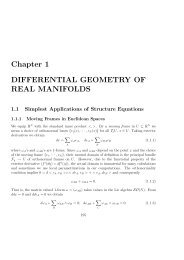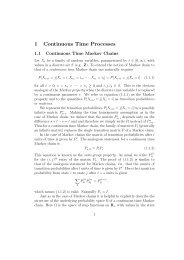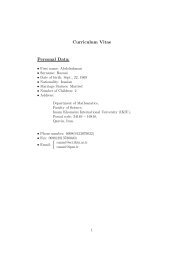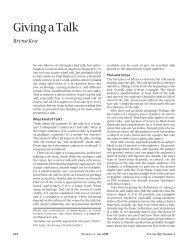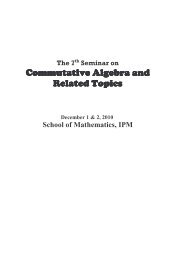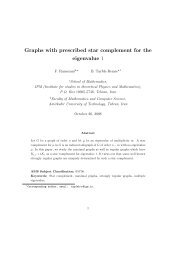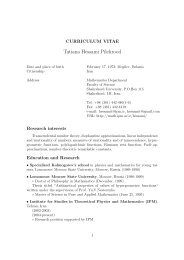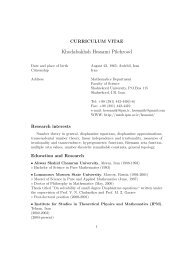Betti numbers of modules over Noetherian rings with ... - IPM
Betti numbers of modules over Noetherian rings with ... - IPM
Betti numbers of modules over Noetherian rings with ... - IPM
Create successful ePaper yourself
Turn your PDF publications into a flip-book with our unique Google optimized e-Paper software.
Chapter 3: Growth <strong>of</strong> the <strong>Betti</strong> sequence <strong>of</strong> the canonical module 39<br />
3.1 The canonical module and Growth <strong>of</strong> its <strong>Betti</strong><br />
sequence<br />
Let (R, m, k) be a Cohen-Macaulay local ring <strong>with</strong> unique maximal ideal m and<br />
residue field k and <strong>of</strong> dimension d. A canonical module <strong>of</strong> R is a finitely generated<br />
R-module ωR for which<br />
Ext i R(k, ωR) ∼ ⎧<br />
⎪⎨ 0 if i = d,<br />
=<br />
⎪⎩ k if i = d.<br />
A canonical module <strong>of</strong> R, if it exists, is unique up to isomorphism. Obviously a<br />
canonical module <strong>of</strong> R is maximal Cohen-Macaulay (MCM for short). If R is a<br />
Gorenstein local ring, ωR = R, and if d = 0, ωR ∼ = E(k). It is known that if ωR<br />
is a canonical module <strong>of</strong> R, then for any p ∈ Spec R, ωRp is a canonical module <strong>of</strong><br />
Rp. Also, it is easy to check that ωR, the m−adic completion <strong>of</strong> ωR, is a canonical<br />
module <strong>of</strong> R and ωR/a ωR is a canonical module <strong>of</strong> R/a if a is an ideal which is<br />
generated by an R-sequence. If the sequence is maximal, then dim R/a = 0 and so<br />
ωR/a ωR ∼ = ER/a(k). We refer the reader to Chapter 3 <strong>of</strong> [16] for standard facts about<br />
canonical <strong>modules</strong>.<br />
Recall that by polynomial growth <strong>of</strong> a sequence {bi} we mean that there is an<br />
integer d and a positive constant c such that bi ≤ cd i . Also a sequence {bi} has<br />
exponential growth if there exist real <strong>numbers</strong> 1 < α < β such that α i < bi < β i for<br />
all i ≫ 0.<br />
Our investigation for studying the growth <strong>of</strong> the <strong>Betti</strong> sequence <strong>of</strong> ωR is started<br />
<strong>with</strong> the following result:


